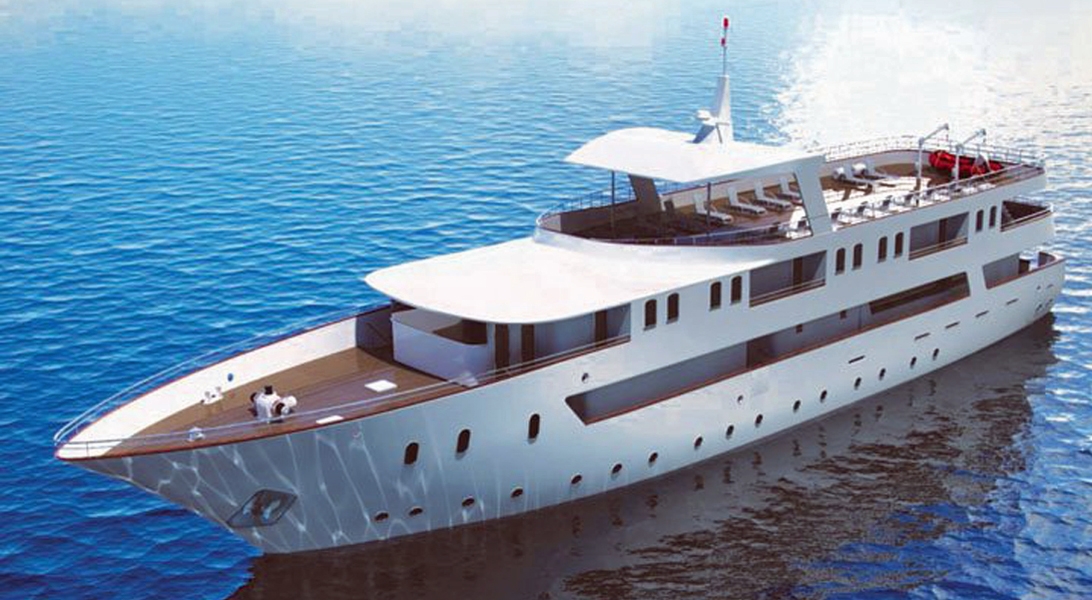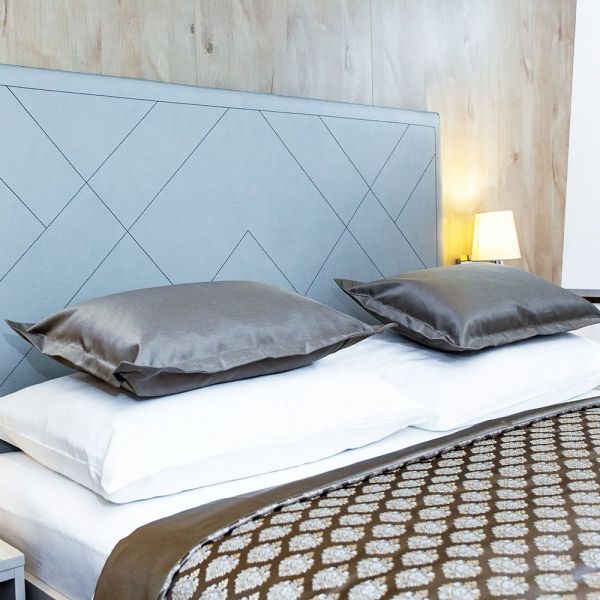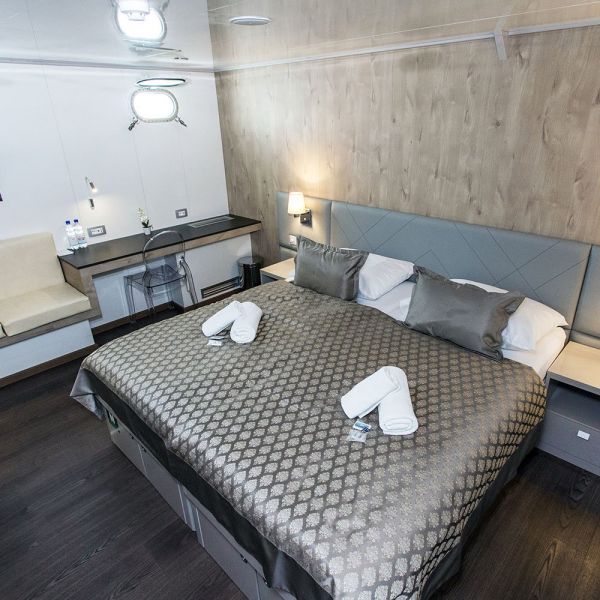This site uses cookies as defined in our Cookie Policy, by continuing to use this site you agree to their use.
Continue
| Arrive | Depart | ||||||
| 6th06 | SepSep | 202626 | Dubrovnik, Croatia, embark on the MS Adriatic Sun | ||||
Nothing can prepare you for your first sight of Dubrovnik. Lying 216 km (135 miles) southeast of Split and commanding a jaw-dropping coastal location, it is one of the world's most beautiful fortified cities. Its massive stone ramparts and fortress towers curve around a tiny harbor, enclosing graduated ridges of sun-bleached orange-tiled roofs, copper domes, and elegant bell towers. Your imagination will run wild picturing what it looked like seven centuries ago when the walls were built, without any suburbs or highways around it, just this magnificent stone city rising out of the sea.In the 7th century AD, residents of the Roman city Epidaurum (now Cavtat) fled the Avars and Slavs of the north and founded a new settlement on a small rocky island, which they named Laus, and later Ragusa. On the mainland hillside opposite the island, the Slav settlement called Dubrovnik grew up. In the 12th century the narrow channel separating the two settlements was filled in (now the main street through the Old Town, called Stradun), and Ragusa and Dubrovnik became one. The city was surrounded by defensive walls during the 13th century, and these were reinforced with towers and bastions in the late 15th century.From 1358 to 1808 the city thrived as a powerful and remarkably sophisticated independent republic, reaching its golden age during the 16th century. In 1667 many of its splendid Gothic and Renaissance buildings were destroyed by an earthquake. The defensive walls survived the disaster, and the city was rebuilt in baroque style.Dubrovnik lost its independence to Napoléon in 1808, and in 1815 passed to Austria-Hungary. During the 20th century, as part of Yugoslavia, the city became a popular tourist destination, and in 1979 it was listed as a UNESCO World Heritage Site. During the war for independence, it came under heavy siege. Thanks to careful restoration, few traces of damage remain; however, there are maps inside the Pile and Ploče Gates illustrating the points around the city where damage was done. It’s only when you experience Dubrovnik yourself that you can understand what a treasure the world nearly lost Arrival in Dubrovnik | |||||||
| 7th07 | SepSep | 202626 | Trstenik, Croatia | ||||
| Mljet National Park and Trstenik - We’ll set off from Dubrovnik this morning and enjoy your first taste of the crystal waters of the Adriatic with a swim stop. After your refreshing dip, you’ll be ready for lunch on board before arriving at Mljet. The Dalmatian coastline is legendary: one of Europe’s most dramatic, extending for hundreds of miles, where steep limestone cliffs plunge into sapphire-blue waters. The mirror-like Adriatic is studded with countless islands, some tiny, some large, some inhabited, some not. Mljet is one of the most seductive of such islands, where the hillsides are clad in a green carpet of lush pine forests bringing that instantly recognisable Mediterranean aroma to the air. Nestling in picturesque coves are medieval fishing villages, refreshingly free from tasteless development, where the alleyways are simply pebbles set into the earth and overhead shutters sway precariously in the warm, gentle breezes. Life here continues much as it has for centuries. Here we’ll enjoy a visit of the national park including the tiny islet of St Mary’s with its 12th-century former Benedictine monastery. With its colourful walls and altar carved from local stone you will already feel a long way from home in this most atmospheric of places – it’s easy to see why legend has it that the Greek hero Ulysses came here to contemplate. After our visit to Mljet, we'll hop back on board and enjoy a short voyage to the pretty little seaside village of Trstenik on the Peljesac Peninsula, arriving early evening. Nestled at the foot of the rolling hills behind, this picturesque, secluded spot is famed for its wine production where generations of families have produced excellent wines for hundreds of years. We'll remain moored overnight, so you can have dinner at your leisure in this charming spot - you'll really feel like you are getting away from it all! | |||||||
| 8th08 | SepSep | 202626 | Makarska, Croatia | ||||
| Makarska - We’ll start with a leisurely morning sailing as we make our way north, pausing for a swim stop before a delicious lunch onboard, an idyllic start to the day. Later this afternoon, we’ll arrive at Makarska from where you can marvel at the rocky splendour of Mount Biokovo, nearly 1,828 metres above sea level, which shelters the coast from less temperate climates further inland. During the 10th century this region was bedevilled by fearsome pirates preying on passing ships. A slightly raffish atmosphere still prevails but piracy has long since been replaced by more peaceful activities such as fishing, and the production of olive oil and wine. St Mark’s Baroque church and some palatial 18th-century Venetian style houses stand guard over Makarska’s main square. We’ll moor overnight for you to enjoy dinner ashore at leisure. | |||||||
| 9th09 | SepSep | 202626 | Omis, Croatia | ||||
| Pučišća and Omiš - We’ll sail this morning to the glorious island of Brač this morning, mooring in idyllic Pučišća. This jewel of a place, perhaps the most spectacular of Croatia’s villages, boasts dwellings of gleaming white stone reflecting the sun onto the crystal-clear water. Once ashore, stroll the streets of this charming spot and enjoy a visit to a stonemasonry school for which this town is known before returning on board for lunch. Continuing the short journey north this afternoon, we’ll visit Omiš, a small coastal town situated at the mouth of the Cetina River. Populated as early as Roman times, Omiš was a fortified town in the Middle Ages with many rulers and masters and some of the medieval fortifications still remain. Here, you can wander through the old town, discovering little alleys and historic churches or enjoying a coffee in one of the many cafés. This evening, relax on board as the chef presents the Captain’s Dinner – a delicious selection of Croatian and Mediterranean specialities. | |||||||
| 10th10 | SepSep | 202626 | Hvar Island, Croatia | ||||
The Croatian island of Hvar bills itself as the "sunniest island in the Adriatic." Not only does it have the figures to back up this claim—an annual average of 2,724 hours of sunshine—but it also makes visitors a sporting proposition, offering them a money-back guarantee if there are seven consecutive days of snow (snow has been known to fall here; the last time being February 2012). Stari Grad - This morning we’ll stop once more for an invigorating swim before we cruise to another stunning island in this incredibly beautiful archipelago, Hvar. Enjoy another delicious lunch on board before mooring later this afternoon at Stari Grad on the northern side of the island of Hvar. The literal translation of Stari Grad is the Old Town and it is indeed the oldest town in the country with the first settlers from Greece establishing a colony here back in 384 BC. Both the historical centre and the Stari Grad Plain were included on the UNESCO list of World Heritage Sites in 2008. A walking tour with your local guide will show you some of the highlights of the historical town centre. Pass House TVRDALJ, the summer house and walled garden of the 16th century poet and aristocrat Petar Hektorović and one of the most well-known buildings in the town. There is also the Dominican Monastery of St. Peter the Martyr as well as a wealth of cobbled streets filled with al fresco bars, cafés and restaurants. In your free time, you might just enjoy a stroll on the seafront promenade or perhaps visit the Monastery Museum with numerous works of art. The ship will remain moored in Stari Grad overnight for the opportunity to dine at leisure where you wish. | |||||||
| 11th11 | SepSep | 202626 | Korčula, Croatia | ||||
Off the coast of Croatia in the southern Adriatic Sea lie some thousand islands and the largest of them, Korçula, is considered the most beautiful. With an average of 3,000 hours of sunshine per annum, which guarantees a wide assortment of Mediterranean vegetation, it is not difficult to understand why seasoned travelers compare Korçula to a latter-day Eden. Separated from the mainland by a channel of only one mile, Korçula's main town, named the same as the island, ranks among the best preserved medieval towns in the Mediterranean. It is the island's main tourist, economic and cultural center. Thanks to its strategic location along the sea trade routes, Korçula has always attracted travelers and settlers. Korcula was founded by Greek colonists, who were followed by Illyrians, Romans and finally the Croats. The Korçula Statute of 1214 is one of the oldest legal documents to have been adopted in this part of Europe. The same century saw the birth of the famous world traveler, Marco Polo. The house said to be his birthplace can be seen in town. Korçulans have always been known as keen seafarers, excellent shipbuilders, stonemasons and artists. From their many voyages, sailors brought back new ideas, which eventually mixed with local customs. To this day, Korçula has maintained the tradition of performing knightly games such as the chivalrous Moreska dance, which has been in existence for more than 400 years. Visitors to Korçula enjoy its stunning location, natural beauty and medieval ambiance. And if that's not enough, the town offers numerous attractions that are within walking distance from the pier, including the City Museum and the Bishop's Treasury. Hvar and Korčula - This morning, enjoy a visit to the bewitching little town of Hvar. Wandering here is pure joy and, remarkably, it’s so compact and cosy that the streets don’t even have names. With its freshwater springs, the island is unusually green, its hillsides boasting spectacular pine forests. Elsewhere you’ll find olive groves, orchards and vineyards, the aromatic pleasures of the island exemplified by the delicate fragrance of abundant lavender fields. Hvar has been inhabited since Neolithic times; later, the ancient Greeks founded a colony here, and during the 14th century, as the Venetian Empire extended its influence, it became a major naval base. Also on the island’s northern shores are some distinctive fortified 16th century buildings, built to repel pirates and assaults by the Ottoman Empire. After exploring Hvar’s agricultural, historical and cultural splendours on our guided walking tour, we’ll return to the ship for lunch as we sail towards Korčula. Ruled by the Venetians for 800 years, it is rather reminiscent of a much smaller Dubrovnik, with its host of tangled lanes so typical of medieval Mediterranean ports. The town is a charming small fortress, celebrated for supplying timber for the wooden walls of Venice and its harbour was a major shelter for the Venetian fleet. You’ll find architectural gems at every turn in its narrow, cobbled streets. Famous for its artistic and musical traditions, Korčula has its own unique sword dance, the ‘moreska’, and a form of acapella singing, but is much more famous as the birthplace of the explorer Marco Polo. His house can still be visited, as can the Icon Museum with its glorious collection of Byzantine icons. After our guided walking tour, there’s time at leisure to explore this beautiful town further, perhaps spotting a restaurant for dinner this evening. | |||||||
| 12th12 | SepSep | 202626 | Dubrovnik, Croatia | ||||
Nothing can prepare you for your first sight of Dubrovnik. Lying 216 km (135 miles) southeast of Split and commanding a jaw-dropping coastal location, it is one of the world's most beautiful fortified cities. Its massive stone ramparts and fortress towers curve around a tiny harbor, enclosing graduated ridges of sun-bleached orange-tiled roofs, copper domes, and elegant bell towers. Your imagination will run wild picturing what it looked like seven centuries ago when the walls were built, without any suburbs or highways around it, just this magnificent stone city rising out of the sea.In the 7th century AD, residents of the Roman city Epidaurum (now Cavtat) fled the Avars and Slavs of the north and founded a new settlement on a small rocky island, which they named Laus, and later Ragusa. On the mainland hillside opposite the island, the Slav settlement called Dubrovnik grew up. In the 12th century the narrow channel separating the two settlements was filled in (now the main street through the Old Town, called Stradun), and Ragusa and Dubrovnik became one. The city was surrounded by defensive walls during the 13th century, and these were reinforced with towers and bastions in the late 15th century.From 1358 to 1808 the city thrived as a powerful and remarkably sophisticated independent republic, reaching its golden age during the 16th century. In 1667 many of its splendid Gothic and Renaissance buildings were destroyed by an earthquake. The defensive walls survived the disaster, and the city was rebuilt in baroque style.Dubrovnik lost its independence to Napoléon in 1808, and in 1815 passed to Austria-Hungary. During the 20th century, as part of Yugoslavia, the city became a popular tourist destination, and in 1979 it was listed as a UNESCO World Heritage Site. During the war for independence, it came under heavy siege. Thanks to careful restoration, few traces of damage remain; however, there are maps inside the Pile and Ploče Gates illustrating the points around the city where damage was done. It’s only when you experience Dubrovnik yourself that you can understand what a treasure the world nearly lost Dubrovnik - As our elegant yacht drifts on past the rocky shores of the beautiful Elaphite Islands, if the weather allows, this will be your last chance to take a swim off the back of the ship as if it were your very own! After our last lunch on board, we’ll arrive in Dubrovnik. Dubrovnik, an independent city-state for much of its history, has evolved differently to the rest of Croatia. On arrival this afternoon, we'll take a tour with an expert local guide explaining the city’s landmarks and intriguing history. The city threw off its Venetian shackles during medieval times founding a commercial empire trading with the eastern Mediterranean, France, Spain and later the Ottoman Empire. As so often happened, the city began to reflect its resultant wealth and today this wonderfully Baroque city proudly nestles behind its huge imposing ramparts in a situation of outstanding natural beauty. The main avenue, lined by intimate cafés, is completely paved with gleaming marble, which dazzles in the sunlight and gives credence to the city’s description as the ‘Pearl of the Adriatic’. | |||||||
| 13th13 | SepSep | 202626 | Dubrovnik, Croatia, disembark the MS Adriatic Sun | ||||
Nothing can prepare you for your first sight of Dubrovnik. Lying 216 km (135 miles) southeast of Split and commanding a jaw-dropping coastal location, it is one of the world's most beautiful fortified cities. Its massive stone ramparts and fortress towers curve around a tiny harbor, enclosing graduated ridges of sun-bleached orange-tiled roofs, copper domes, and elegant bell towers. Your imagination will run wild picturing what it looked like seven centuries ago when the walls were built, without any suburbs or highways around it, just this magnificent stone city rising out of the sea.In the 7th century AD, residents of the Roman city Epidaurum (now Cavtat) fled the Avars and Slavs of the north and founded a new settlement on a small rocky island, which they named Laus, and later Ragusa. On the mainland hillside opposite the island, the Slav settlement called Dubrovnik grew up. In the 12th century the narrow channel separating the two settlements was filled in (now the main street through the Old Town, called Stradun), and Ragusa and Dubrovnik became one. The city was surrounded by defensive walls during the 13th century, and these were reinforced with towers and bastions in the late 15th century.From 1358 to 1808 the city thrived as a powerful and remarkably sophisticated independent republic, reaching its golden age during the 16th century. In 1667 many of its splendid Gothic and Renaissance buildings were destroyed by an earthquake. The defensive walls survived the disaster, and the city was rebuilt in baroque style.Dubrovnik lost its independence to Napoléon in 1808, and in 1815 passed to Austria-Hungary. During the 20th century, as part of Yugoslavia, the city became a popular tourist destination, and in 1979 it was listed as a UNESCO World Heritage Site. During the war for independence, it came under heavy siege. Thanks to careful restoration, few traces of damage remain; however, there are maps inside the Pile and Ploče Gates illustrating the points around the city where damage was done. It’s only when you experience Dubrovnik yourself that you can understand what a treasure the world nearly lost Return home | |||||||




The images shown are for illustration purposes only and may not be an exact representation of what you find on the ship.

Located on the main deck and approximately 16 square metres (172 square feet) with a fixed double bed. Accessed from the deck, there is just one guest cabin available on the main deck which benefits from the addition of two oval shaped windows to capture the views.
Features

Treat yourself to one of our superior upper deck cabins, measuring approximately 16 square metres (172 square feet) with double (cabins 7 & 8), fixed twin beds (cabins 3 & 4) or twin beds pushed together as double (cabins 5 & 6), and one window plus the addition of a small outside balcony with a bench for two, so you can enjoy the invigorating sea breeze and breathtaking views - without even leaving your cabin!
Features
Please note: cabins 1 and 2 (front) on upper deck measure approximately 14 square metres (151 square feet) with twin beds that can be pushed together.

Located on the lower deck, these cabins enjoy a generously proportioned 17 square metres approximately (183 square feet) of living space and are accessed from inside the ship, with twin beds that can be pushed together (cabins 14, 15, 18, 19) or fixed doubles (cabins 12, 13, 16, 17) and two attractive porthole windows plus a further one in the bathroom.
Features
The images shown are for illustration purposes only and may not be an exact representation of what you find on the ship.
The images shown are for illustration purposes only and may not be an exact representation of what you find on the ship.
The images shown are for illustration purposes only and may not be an exact representation of what you find on the ship.
The images shown are for illustration purposes only and may not be an exact representation of what you find on the ship.
| Return flights including luggage allowance | |||
| Overseas Transfers | |||
| 7 nights aboard the MS Adriatic Sun | |||
| Return Flights | |||
| Return Overseas Transfers | |||
| Tours with expert guides included | |||
| Services of an experienced tour manager throughout | |||
| Complimentary tea and coffee | |||
| Complimentary Wi-Fi | |||
| Port Taxes and Fees | |||
 | ABTA and ATOL Protection* | ||
Fly/cruise package |
Date 6th Sep 2026 |
Nts 7 |
Interior  |
Oceanview £2,499pp |
Balcony  |
Suite  |
Interior  |
Oceanview £4,998pp |
Balcony  |
Suite  |
Date 6th Sep 2026 |
Nts 7 |
Interior  |
Oceanview £2,499pp |
Balcony  |
Suite  |
Interior  |
Oceanview £4,998pp |
Balcony  |
Suite  |






| Oceanview | |
| (All prices are £GBP per person) | |
| Sun 3rd May 202603 May 26 | Please call for availability |
| Sun 10th May 202610 May 26 | 1,699 |
| Sun 10th May 202610 May 26 | 3,398 |
| Sun 24th May 202624 May 26 | 1,899 |
| Sun 24th May 202624 May 26 | 3,798 |
| Sun 31st May 202631 May 26 | 1,999 |
| Sun 31st May 202631 May 26 | 3,998 |
| Sun 7th Jun 202607 Jun 26 | 2,299 |
| Sun 7th Jun 202607 Jun 26 | 4,598 |
| Sun 14th Jun 202614 Jun 26 | 2,299 |
| Sun 14th Jun 202614 Jun 26 | 4,598 |
| Sun 28th Jun 202628 Jun 26 | 2,299 |
| Sun 28th Jun 202628 Jun 26 | 4,598 |
| Sun 5th Jul 202605 Jul 26 | Please call for availability |
| Sun 13th Sep 202613 Sep 26 | 2,499 |
| Sun 13th Sep 202613 Sep 26 | 4,998 |
| Sun 20th Sep 202620 Sep 26 | 2,299 |
| Sun 20th Sep 202620 Sep 26 | 4,598 |
| Sun 4th Oct 202604 Oct 26 | 1,999 |
| Sun 4th Oct 202604 Oct 26 | 3,998 |
| Sun 11th Oct 202611 Oct 26 | Please call for availability |
Fusion Cruises when selling travel arrangements is a trading name of The Midcounties Co-operative Ltd. Fusion Cruises is an Accredited Body Member of Midcounties Co-operative Travel Consortium. (ABTA:P6652, ATOL:6053).
Book with Confidence. We are a Member of ABTA which means you have the benefit of ABTA’s assistance and Code of Conduct.
Some of the flights and flight-inclusive holidays on this website are financially protected by the ATOL scheme but ATOL protection does not apply to all holiday and travel services offered on this website. This website will provide you with information on the protection that applies in the case of each holiday and travel service offered before you make your booking. If you do not receive an ATOL Certificate then the booking will not be ATOL protected. If you do receive an ATOL Certificate but all parts of your trip are not listed on it, those parts will not be ATOL protected. Please see our booking conditions for information, or for more information about financial protection and the ATOL Certificate go to: www.caa.co.uk
